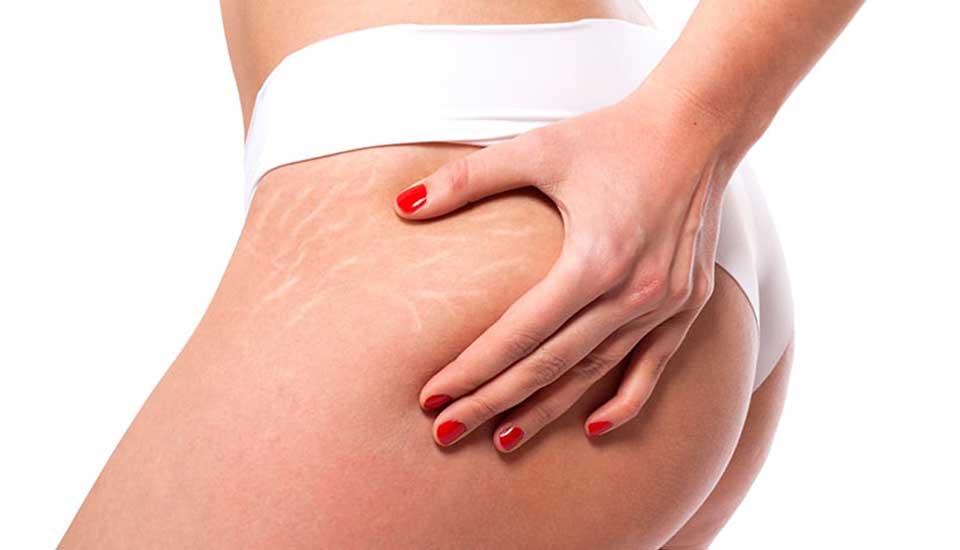Stretch marks, those lines that suddenly appear on our skin, often leave us puzzled and seeking remedies. This guide dives into what stretch marks are, exploring their causes and the myriad of treatment options available. From natural home remedies to advanced dermatological procedures, it aims to arm you with knowledge and choices. Whether you’re looking to prevent stretch marks during pregnancy or reduce their appearance post-weight loss, this article provides valuable insights into effective strategies for dealing with these common skin concerns.
Understanding Causes and Types
Genetic Factors
Genetic predisposition plays a crucial role in the development of stretch marks. Some people are more likely to get them because of their family history. This means if your parents had stretch marks, you might be more prone to developing them too.
Hormonal changes also contribute significantly. During puberty, pregnancy, or with certain medical conditions, hormones can fluctuate wildly. These changes can weaken skin fibers, making it easier for stretch marks to form.
Rapid Growth
Rapid weight gain or growth stretches the skin quickly and beyond its elasticity limit. This sudden expansion causes the dermis layer of the skin to tear, forming what we see as stretch marks. Athletes and bodybuilders often experience this due to quick muscle growth.
Pregnant women commonly develop stretch marks on their abdomen in the later stages of pregnancy when the baby is growing fastest. Teens may also notice them during growth spurts.
Striae Rubra vs Alba
Striae rubra, or red stretch marks, signify newer scars that have recently formed on the skin. They are typically red or purple and indicate that the area is still healing.
Over time, these red lines fade into striae alba, which are older and appear as white or silver lines on the skin’s surface. The transition from striae rubra to striae alba shows how our body heals but leaves behind a reminder of rapid growth or change.
Essential Ingredients for Prevention
Hyaluronic Acid
Hyaluronic acid stands out in skin hydration. It helps maintain moisture, crucial for skin elasticity. This ingredient can significantly reduce the risk of developing stretch marks by keeping the skin supple and resilient.
It works by drawing water to the skin’s surface, promoting a healthy, hydrated appearance. Regular use of products containing hyaluronic acid can improve skin texture and diminish the visibility of existing stretch marks.
Vitamin A
Vitamin A, particularly retinol, plays a pivotal role in skin renewal. It accelerates cell turnover, fading stretch marks over time. Retinol also boosts collagen production, essential for skin strength and elasticity.
However, it’s important to approach retinol with caution during pregnancy or breastfeeding. Consulting a healthcare provider before starting any new treatment is advisable.
Natural Oils
Natural oils such as coconut oil, almond oil, and argan oil are excellent for nourishing the skin. They provide deep moisturization and enhance skin elasticity, making them effective against stretch marks.
Coconut oil is rich in fatty acids that repair and fortify the skin barrier. Almond oil contains vitamins E and K that help improve circulation and heal damaged skin. Argan oil is packed with antioxidants that protect against free radical damage while moisturizing the skin. These oils can be applied directly to affected areas or used as part of a daily skincare routine to prevent stretch mark formation.
Selecting Skincare for Stretch Marks
Glycolic Acid
Glycolic acid, combined with retinoids, boosts collagen production. This duo is key in fading early stretch marks. Look for gels or creams that feature both ingredients.
Retinoids are potent, so start with a lower concentration. They can make skin sensitive to sunlight. Always apply sunscreen during the day.
Peptide Creams
Peptides play a crucial role in stimulating collagen and elastin fibers. These proteins maintain skin’s elasticity and firmness.
Creams rich in peptides can significantly improve the appearance of striae distensae. Regular use as part of your skincare routine enhances results over time.
Dermatologically Tested Products
For those with sensitive skin, choosing dermatologically tested products is vital. They minimize the risk of irritation while treating stretch marks.
Opt for moisturizers containing cocoa butter, shea butter, or body butter for hydration without harm. Rosehip and argan oil are also gentle yet effective options.
Lifestyle Tips for Prevention
Stable Weight
Maintaining a stable weight is crucial. Rapid weight gain or loss stretches the skin quickly. This increases the risk of stretch marks. For pregnant women, it’s about gradual weight gain.
They should follow their doctor’s advice on healthy pregnancy weight gain. Everyone else should aim for steady changes in body size. This can help keep your skin’s elasticity intact.
Sun Protection
Wearing sunscreen is another key step. It protects skin from UV damage which can weaken it over time. Weak skin is more prone to stretching and marks.
Apply a broad-spectrum sunscreen every day, even when it’s cloudy. Focus on areas where stretch marks commonly appear like the stomach, thighs, and chest.
Regular Moisturizing
Moisturizing keeps the skin supple and elastic. It reduces the risk of developing stretch marks significantly. Use products that hydrate deeply and strengthen the skin barrier.
Look for ingredients like hyaluronic acid or glycerin in moisturizers. Apply them at least twice a day to maintain moisture levels in your skin.
Diet and Hydration Importance
Vital Nutrients
Eating foods rich in vitamins C, E, zinc, and silica is crucial. These nutrients support collagen production, vital for skin health.
Foods like oranges, strawberries, almonds, and spinach are excellent sources. They help the skin remain flexible and resilient against rapid weight gain or loss.
Staying Hydrated
Maintaining good hydration levels is key to preventing stretch marks. Well-hydrated skin retains its elasticity better than dry skin.
Drinking plenty of water each day keeps the skin soft and less prone to tearing when stretched. This simple practice can significantly reduce the risk of developing stretch marks.
Omega-3 Fatty Acids
Incorporating omega-3 fatty acids into your diet enhances skin flexibility and strength. Foods like salmon, chia seeds, and walnuts are great options.
Omega-3s help by moisturizing the skin from within. They play a critical role in maintaining skin cell membrane health.
Exercise’s Role in Skin Health
Improved Circulation
Regular, moderate exercise boosts circulation. This enhanced blood flow nourishes skin cells, promoting overall skin health. Better circulation aids in the healing process, crucial for repairing stretch marks.
Exercise increases collagen production. Collagen is key for a healthy skin barrier and elasticity. With more collagen, your skin can better withstand stretching and reduce the appearance of stretch marks.
Muscle Tone
Exercises that improve muscle tone can tighten loose skin. This tightening effect may make stretch marks less visible. Focus on strength training to build muscles beneath areas prone to stretch marks.
Muscle toning exercises support a firm foundation under your skin. They complement efforts to hydrate and care for your skin externally by working from within.
Stress Reduction
Yoga and Pilates are excellent for reducing stress levels. Lower stress means lower cortisol levels, which benefits your skin’s health indirectly.
These activities not only help manage weight but also promote relaxation and enhance skin texture through improved blood flow. By integrating yoga or Pilates into your routine, you’re supporting both mental and physical aspects of skincare.
Misconceptions about Removal
Complete Removal
Many believe that stretch marks can vanish entirely with the right treatment. This is not true. While certain methods may lessen their visibility, complete removal is often unachievable.
Treatments might improve skin texture and color. Yet, they rarely get rid of stretch marks for good. It’s crucial to set realistic expectations before starting any treatment.

OTC Products
Over-the-counter (OTC) products are popular for those hoping to erase stretch marks. However, the belief in oils and creams as magic solutions is a myth.
Most of these products can only moisturize the skin. They don’t penetrate deeply enough to cause significant changes in stretch marks’ appearance. Relying solely on them might lead to disappointment.
Social Media Myths
Social media often showcases flawless post-treatment results, setting unrealistic expectations. These portrayals can mislead viewers into thinking perfect outcomes are common.
In reality, results vary widely among individuals. Factors like skin type and mark maturity affect how well treatments work. It’s important to approach social media claims with skepticism and consult professionals for accurate advice.
Expert Insights on Prevention
Early Intervention
Experts stress that early intervention is crucial for minimizing the development of stretch marks. Dermatologists argue that once these marks appear, they become more challenging to treat.
They recommend monitoring areas prone to stretching during significant weight changes or pregnancy. Applying topical treatments as soon as skin tension is noticed can make a big difference.
Lifestyle Adjustments
Combining topical treatments with lifestyle adjustments offers the best prevention outcomes. Researchers suggest maintaining a healthy diet and staying hydrated to keep the skin elastic and less prone to tearing.
Regular exercise also plays a role in maintaining skin elasticity and overall health. These measures, coupled with specific creams recommended by dermatologists, form an effective defense against stretch marks.
Professional Help
When over-the-counter options fail, seeking professional help becomes necessary. Experts advise consulting a doctor if stretch marks cover large areas or cause discomfort.
Medical professionals can offer treatments like laser therapy which has shown promising results in reducing the appearance of stretch marks. Remember, early consultation can lead to better outcomes and prevent further spread.
Summary
Understanding the causes, prevention methods, and misconceptions about stretch marks equips individuals with the knowledge to manage their skin health effectively. The article explored various aspects, from essential ingredients in skincare products to lifestyle and dietary tips that contribute to skin elasticity and health. It highlighted the importance of hydration, exercise, and debunking common myths surrounding stretch mark removal. Expert insights provided a comprehensive view on preventative measures, emphasizing proactive care over reactive solutions.
The journey towards preventing or managing stretch marks requires consistency, patience, and informed choices in skincare and lifestyle habits. Readers are encouraged to integrate these insights into their daily routines for optimal skin health. By focusing on prevention and employing effective strategies discussed herein, individuals can enhance their skin’s resilience against stretch marks. For further personalized advice, consulting a dermatologist is recommended.
Frequently Asked Questions
What causes stretch marks?
Stretch marks are primarily caused by rapid stretching of the skin due to weight gain, puberty, or pregnancy. They can also result from hormonal changes and genetic predisposition.
Can certain ingredients prevent stretch marks?
Yes, ingredients like hyaluronic acid, retinol, and vitamin E have been shown to improve skin elasticity and may help in preventing stretch marks.
How should I select skincare products for stretch marks?
Choose skincare products that contain collagen-boosting and hydrating ingredients such as glycolic acid, vitamin C, and shea butter for effective treatment of stretch marks.
Are there lifestyle changes that can prevent stretch marks?
Maintaining a healthy weight through balanced diet and regular exercise can reduce the risk of developing stretch marks. Staying hydrated is also crucial for skin elasticity.
Why is hydration important in preventing stretch marks?
Hydration maintains skin elasticity, making it less prone to tearing when stretched. Drinking sufficient water daily is essential for this purpose.
How does exercise contribute to preventing stretch marks?
Regular exercise improves circulation and skin elasticity, reducing the likelihood of developing stretch marks by strengthening the underlying muscle tissue.
Are all claims about removing stretch marks true?
Many claims about completely removing stretch marks are misconceptions. While their appearance can be reduced through treatments like laser therapy and topical creams, total removal is often not possible.





